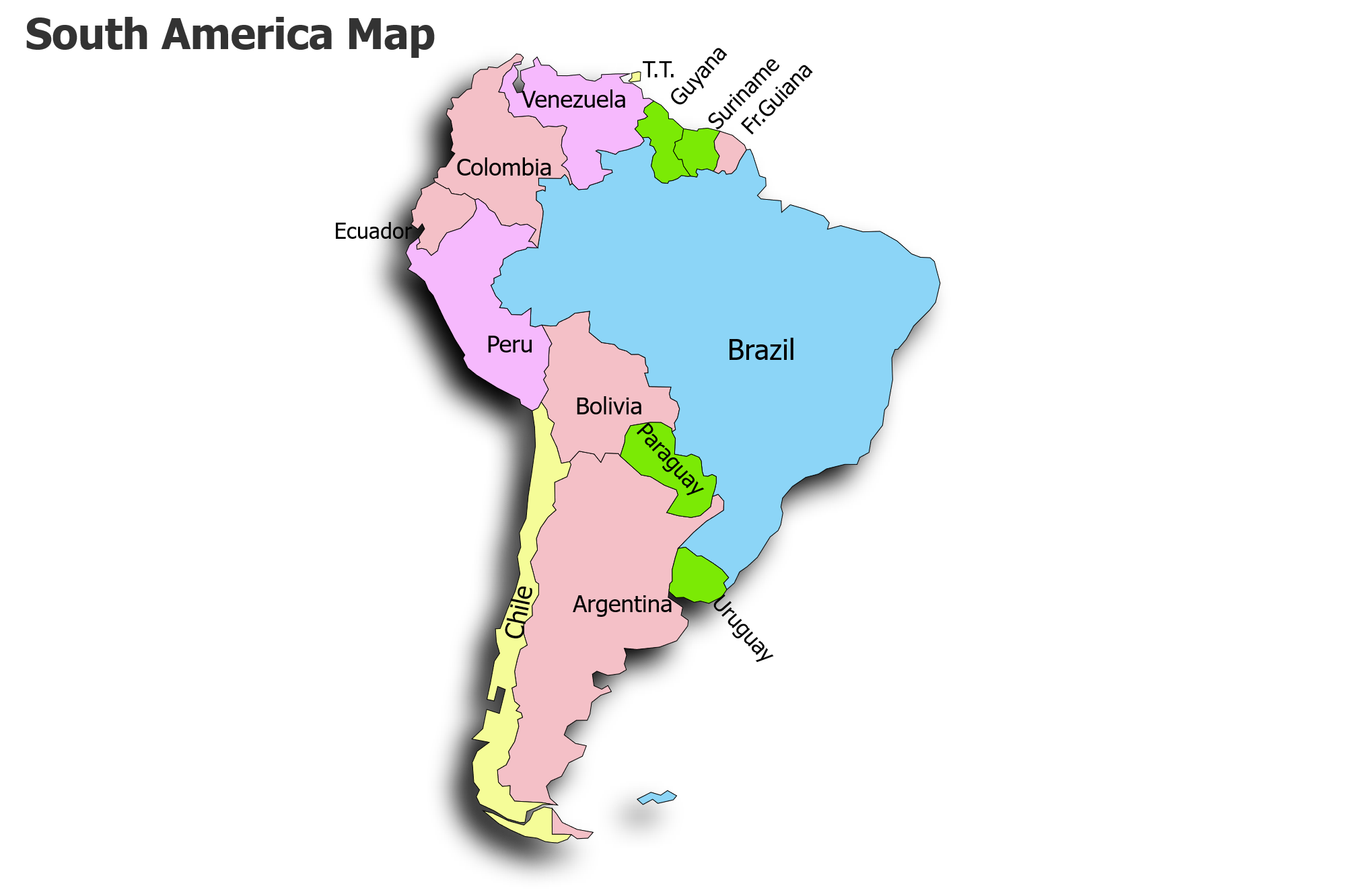South American Continent
A brief about South American continent

About South America
South America is a continent rich in natural beauty and diverse landscapes, spanning from the Caribbean Sea in the north to the Drake Passage in the south. It is bordered by the Atlantic Ocean to the east and the Pacific Ocean to the west. The continent is home to 12 countries, each with its own unique culture, history, and geography.
Countries in South America range from the vast and populous Brazil to the smaller nations like Uruguay and Suriname. The largest country in South America by land area is Brazil, covering over 8.5 million square kilometers. It is followed by Argentina and Peru. On the other hand, the smallest country in South America by land area is Suriname, situated on the northeastern coast of the continent. Suriname covers approximately 163,820 square kilometers, making it one of the smallest countries in South America.
South America is renowned for its diverse landscapes, including the Amazon Rainforest, the Andes Mountains, and the Atacama Desert. These natural wonders attract visitors from around the world, offering opportunities for adventure, exploration, and cultural immersion.
Countries and Land Area
South America, like Asia, is characterized by its distinct landmass, separated from other continents by natural features such as oceans and mountains. To the north, it is bordered by the Caribbean Sea and the Atlantic Ocean, while the Pacific Ocean lies to the west. The continent stretches from the Caribbean Sea in the north to the Southern Ocean in the south, encompassing diverse landscapes and climates.
South America is home to 12 countries, each contributing to the continent's rich cultural tapestry. The largest country in South America by land area is Brazil, covering approximately 8.5 million square kilometers, followed by Argentina and Peru. On the other hand, the smallest country in South America by land area is Suriname, situated on the northeastern coast.
Similar to the Eurasian countries in Asia, South American nations share cultural, historical, and geographical ties that shape the continent's identity. From the Amazon Rainforest to the Andes Mountains, South America boasts breathtaking natural wonders that attract visitors from around the globe.
Regions
The South American continent can be divided into regions such as:
- The Andean Region
- The Amazon Basin
- The Brazilian Highlands
- The Pampas
- The Guianas
Languages
In South America, people speak different languages because of their diverse cultures. Most people speak Spanish or Portuguese, but there are also many native languages spoken by indigenous groups. These native languages, like Quechua and Guarani, are important to the people's identity. Besides, because of immigration, people speak languages like Italian, German, and Arabic. This mix of languages shows how diverse South America is and why it's important to keep these languages alive.
History and culture
North America has a rich and diverse history and culture, shaped by the interactions of Indigenous peoples, European settlers, and immigrants from around the world. For thousands of years, Indigenous peoples have inhabited the continent, each with their own languages, customs, and spiritual beliefs. They have deep connections to the land and a profound respect for nature, passing down their traditions through oral storytelling and art.
With the arrival of European explorers and settlers, North America underwent significant changes. Colonization led to the establishment of new societies and governments, often at the expense of Indigenous peoples and their lands. Over time, waves of immigration from Europe, Asia, Africa, and other regions further enriched the cultural tapestry of North America. Today, the continent celebrates its diversity through various cultural events, festivals, and traditions, showcasing the vibrant mix of languages, cuisines, and customs that have come to define North American culture.
Landscapes
The history and culture of South America are fascinating. For thousands of years, indigenous peoples have inhabited the land, each with their own languages, customs, and tales passed down through generations. They have a strong bond with nature, believing in ancient legends that explain the origins of the world.
Later on, European explorers arrived in South America, bringing new ideas and ways of life. This led to significant changes, including the introduction of new technologies and systems of governance. Over time, people from various parts of the world migrated to South America, creating a rich tapestry of cultures and traditions. Today, South America celebrates its diversity through vibrant festivals and cultural events, highlighting the unity found in shared experiences and heritage.
- Read More:
- About South America |
- Facts